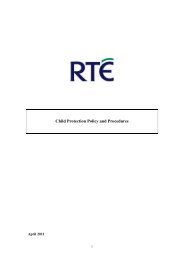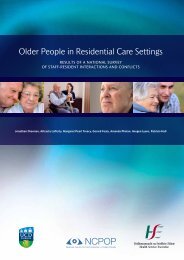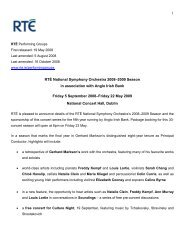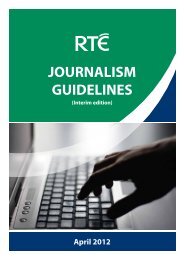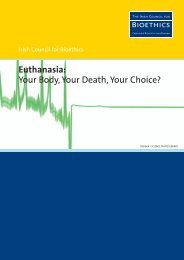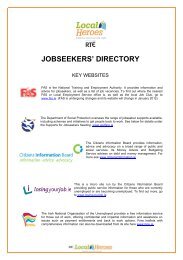From Leaving CertiFiCate to Leaving SChooL a Longitudinal Study ...
From Leaving CertiFiCate to Leaving SChooL a Longitudinal Study ...
From Leaving CertiFiCate to Leaving SChooL a Longitudinal Study ...
Create successful ePaper yourself
Turn your PDF publications into a flip-book with our unique Google optimized e-Paper software.
6<br />
<strong>From</strong> <strong>Leaving</strong> Certificate <strong>to</strong> <strong>Leaving</strong> School<br />
for later access <strong>to</strong> education, training and employment (Eurydice, 2009).<br />
In the Irish context, young people with a <strong>Leaving</strong> Certificate qualification<br />
have better access <strong>to</strong> post-school education and training as well as <strong>to</strong><br />
high-quality, better paid employment than those with Junior Certificate<br />
or no qualifications (Smyth and McCoy, 2009). Even among those taking<br />
the <strong>Leaving</strong> Certificate exam, higher grades are associated with entry<br />
<strong>to</strong> third-level education, particularly <strong>to</strong> courses associated with the élite<br />
professions, a smoother transition <strong>to</strong> employment, and greater access <strong>to</strong><br />
white-collar jobs (Byrne et al., 2008).<br />
The consequences of high stakes testing have been the subject of<br />
considerable debate. Some researchers argue that national tests based on<br />
centrally set procedures are necessary <strong>to</strong> ensure that the performance of<br />
individual students (and schools) are readily comparable (Grodsky et al.,<br />
2008). Others maintain that tests can lead <strong>to</strong> positive individual learning<br />
experiences and educational outcomes (Braun, 2004; Williamson,<br />
Bondy, Langley and Maine, 2005). Tests are seen as providing students<br />
with information about their own acquired knowledge which can be<br />
compared <strong>to</strong> that of their peers and the national average.<br />
In contrast, a large body of research has emerged, especially in the<br />
US, which points <strong>to</strong> the unintended consequences of high stakes testing<br />
on student performance, engagement in school, and teaching and learning<br />
(Airasian and Madaus, 1983; Madaus, 1988), access <strong>to</strong> college<br />
(Perna and Thomas, 2008; Hill 2008), and the reproduction of gender<br />
and social class inequalities (Grodsky, Warren and Felts, 2008; Diamond<br />
and Spillane, 2004). One of the main areas of research in relation <strong>to</strong> high<br />
stakes testing is on the extent <strong>to</strong> which these tests influence what knowledge<br />
is taught, the form in which it is taught, and how it is taught (Au,<br />
2010). Many studies have shown that in a high stakes environment extensive<br />
time is given by teachers <strong>to</strong> exam preparation, which results in a<br />
narrowing of the curriculum and fragmentation of subject knowledge<br />
through the neglect of subject content not included in exams (Shephard<br />
and Dougherty, 1991; Au, 2007). A decline in instructional time for nontested<br />
subjects has also been demonstrated in other studies (Stecher,<br />
2002) with an increasing amount of time devoted <strong>to</strong> practice tests (Jones<br />
et al., 1999). Critics argue that high stakes examinations reduce the<br />
breadth of the curriculum by emphasising only subjects and dimensions



